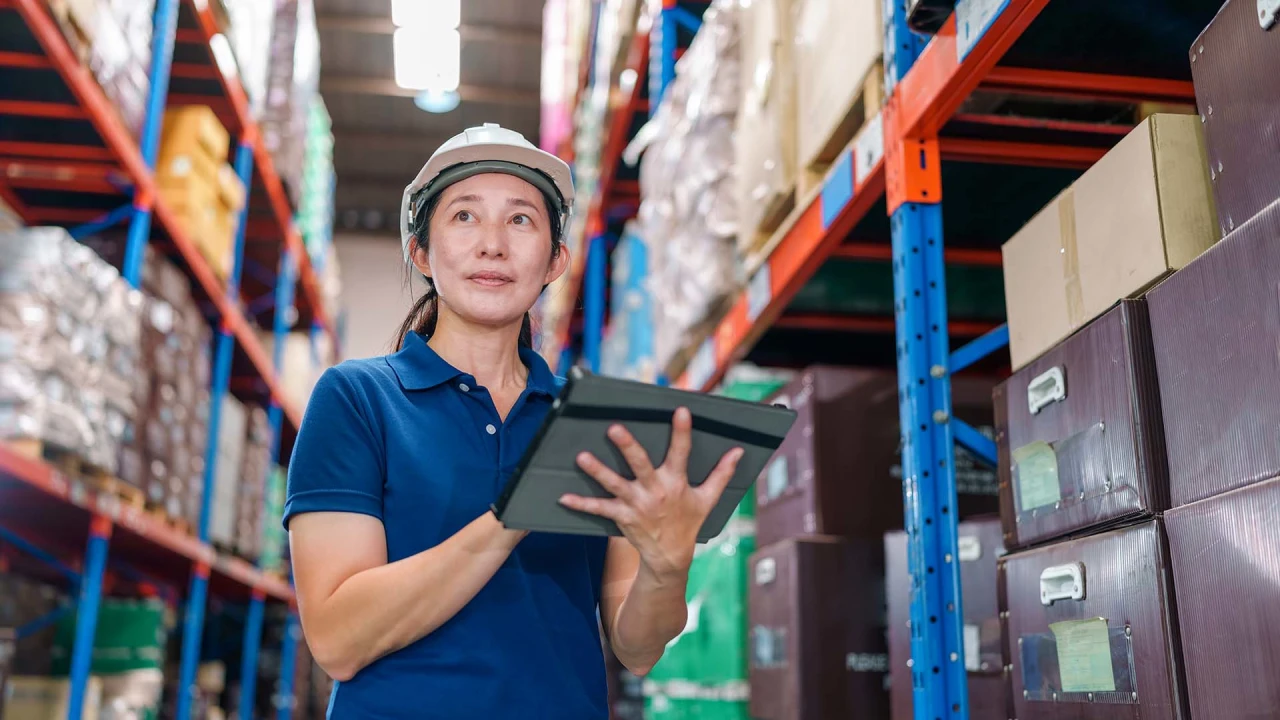BY MARIA HAGGERTY for Inc.
From significant achievements in the medical field to controversy surrounding its usage in media and entertainment, the topic of Artificial Intelligence (AI) is pervasive, touching almost every industry you can think of, including e-commerce.
So, what kinds of innovations are altering e-commerce fulfillment, and how can businesses utilize them to improve operations?
1. Optimizing inventory management
An effective inventory management system is the cornerstone of a successful retail operation. Having accurate, real-time visibility into inventory data allows companies to properly monitor inventory levels, predict customer demand, and ensure that the right mix of SKUs is occupying valuable warehouse space.
Warehouses are utilizing AI-based demand forecasting algorithms to quickly and efficiently evaluate sales data, market data, customer data, and various external data in order to generate precise projections. The ability to identify trends and patterns through analyzing huge quantities of data allows fulfillment teams to right-size inventory planning.
Ultimately, AI-powered technology allows companies to customize processes to ensure all stages of fulfillment operations are moving as smoothly as possible.
2. Advancing hybrid fulfillment capabilities
The rapid e-commerce growth of the past few years put demands on fulfillment operations that fast-tracked the development and utilization of newer, faster, more competitive fulfillment solutions. This push was brought on in large part by the need to simultaneously balance bulk orders associated with business-to-business (B2B) and high-volume single- and multiple-item orders associated with direct-to-consumer (DTC) order volumes.
The requirements of this dual approach led to the adoption of a flexible approach to filling orders called hybrid fulfillment, in which a mix of different fulfillment models (e.g., in-house fulfillment, third-party logistics, and drop shipping.) are utilized to meet diverse B2B and B2C needs. Effectively managing hybrid fulfillment operations demands dedicated, strategic planning, actively examining and refining workflows, automating manual processes, and taking as much guesswork out of the mix as possible-the very things AI is designed for.
3. Improving order fulfillment productivity
Balancing inventory with fluctuating consumer demand while maintaining profitability is increasingly challenging. One example of AI-powered software addressing this complex area is OptiSlot DC, a solution that optimizes slotting, which is the process of organizing inventory in a warehouse or distribution center.
This software’s algorithms weigh a product’s attributes against the physical characteristics of the warehouse environment, and your operational goals. The results of implementing this slotting technology range from improving order fulfillment cycle times to reducing partial order shipments, improving space utilization, and more.
4. Predicting maintenance needs
For any goods-based business to run smoothly, the equipment and technology used throughout its supply chain need to be running smoothly, too. When a piece of machinery isn’t working properly, it’s the beginning of a domino effect that can ripple out as far as the end user, causing a negative customer experience.
AI-powered predictive maintenance is now used to continuously monitor the condition of equipment. By examining data, this technology can detect the likelihood of a malfunction early enough to be able to put preventive measures in place to avoid or mitigate the predicted issues. This is a time and money-saver, preventing interruptions that could negatively impact business.
5. Identifying opportunities for autonomy
Humans and AI have been working side by side successfully for years. The key to that relationship is a division of labor based on the jobs each are suited to. Repetitive tasks tend to have a high rate of human error, making those tasks more suitable for AI whereas complex problem-solving should be left to humans. It’s a symbiotic relationship.
AI-based warehouse automation is being used to modernize how items are picked, packed, and shipped. For example, AI-powered warehouse robots can use machine learning that enables them to travel throughout a warehouse, identify items, and carry out other activities autonomously. This allows humans to redirect their time and attention to tasks that will benefit from their skills, increasing overall productivity.
AI is changing the way we collect and manage data, but determining how that data should be used to solve problems and realize gains still requires human contribution. The businesses that are succeeding with the implementation of AI in fulfillment operations are combining the best of human and machine intelligence.
